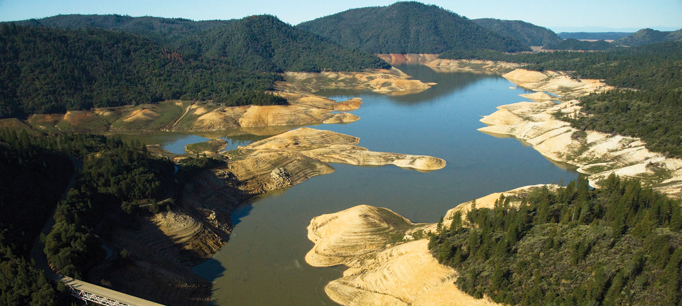This is part of a continuing series on the impact of the drought.
This weekend, the Southland got some much needed rain. This storm helped fill local reservoirs and moisten parched soils—bolstering the region for a fourth year of drought. Unfortunately, too much of this stormwater simply ran straight into local rivers and the ocean, picking up numerous pollutants along the way. Local and state officials want to change this by developing programs that capture and store more stormwater—simultaneously reducing pollution and improving water supplies.
In California, it’s hard to pay for such programs, given our complicated laws on local water finance. To gather ideas about how the state might help, two Senate committees held a joint informational hearing last week. I provided some context on funding issues and opportunities, drawing on PPIC’s recent work on water system finance.
Stormwater is one of California water’s “fiscal orphans.” It faces a critical funding gap—on the order of $500 to $800 million annually—in large part because of constraints introduced by Proposition 218, a constitutional amendment approved by voters in 1996. Around this time, stormwater management changed. What was once the routine job of getting storm drainage out of streets as fast as possible became the much more difficult job of preventing the contents of this drainage—an often toxic mix of fuels, fertilizers, pesticides, animal waste, and trash—from harming our waterways and beaches. Proposition 218 introduced strict requirements on how to calculate the costs of these programs, and it also required that local voters—rather than their elected representatives—approve any fee increases. Local governments have been in a bind ever since. They are required by law to manage this pollution, but they face voter resistance to paying for cleanups that mainly affect people living in communities downstream.
The new interest in treating stormwater as a resource—not just a nuisance—is part of a welcome shift toward thinking about California’s water in a more holistic way. For too long, we have been managing different aspects of our water in isolation—with separate programs for water delivery, wastewater treatment, and management of floods and stormwater. If it is done right, capturing stormwater in rain gardens and wetlands can filter out the pollution while storing the water for later use. Recent court rulings and Assembly Bill 2403 (enacted in 2014) helped clarify that the costs of capturing stormwater for water supply can be included in the bills for water delivery. This makes better management easier: increases in water rates require customer oversight but not direct voter approval.
However, more action is needed because some of the costs of stormwater programs relate strictly to managing pollution. The legislature should consider other ways to help local agencies raise the needed funds. One promising direction involves expanding the scope of a 2001 law. This law (AB 810) authorized two Southern California water agencies to apply revenues from the extra charges on water bills for overwatering landscapes—a source of polluted runoff during the dry summer months—to stormwater programs. It’s worked well, and it would be easy to extend this authority to agencies around the state.
Another simple fix would be to let local agencies use their state transportation dollars—funded mainly by the tax on fuels—as matching funds for state grants that support stormwater projects. Under current rules, the state considers these transportation funds to be “state” monies, even though they are generated by local drivers and earmarked for local use. If those rules were changed, local governments that are revamping their streets to make them more bike- and pedestrian-friendly could also create rain gardens that capture, treat, and store stormwater—for a small added cost.
Steps like these are examples of low-hanging fruit that can help California get on a more sustainable path of managing its scarce water resources.


